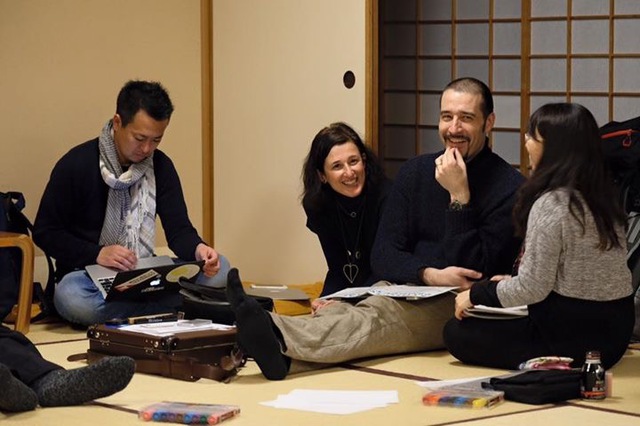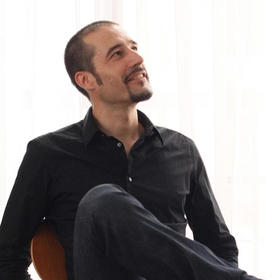一方的な文化発信のためのアートか、市民社会活性化のためのアートか

オリンピック会場の炎が消えた瞬間から始まる4年間のお祭りが、1992年のバルセロナ五輪を機にオリンピック行事として組み立てられた。それまでのオリンピックと違い、バルセロナの“文化のオリンピック大会”は、バルセロナ市の活性化と国際的発信をねらった戦略であった。それ以降、この4年計画が慣例的になったが、あくまでも夏期五輪の付随的なものとして位置づけられている。芸術や文化は、(オリンピック終了後のことはほとんど考えられていないのだが)開催都市が国際レベルであるという主張を大々的に公表するために一役買っている。
東京も例外ではない。日本の組織委員会は大胆にも2020年の東京五輪に先駆けて20万の文化イベントを展開すると発表した。この驚くべき数字の裏に隠されている理論的根拠はいたってシンプルだ。ロンドンよりも多く、ロンドンよりもよく。ロンドンでの文化プログラムの177,717件が日本の組織委員会の頭から離れないのであろうか。2016年の五輪を控えさまざまな問題に苦しんでいるリオとは大違いである。
東京が2020年の五輪開催都市となるずっと以前から、日本政府は国際舞台で失いつつある自身の影響力を強めるため、芸術や文化を外交的政策の道具とした計画(国内各所で非難されているのだが)に乗り出していた。国内独自のポップカルチャーである漫画やアニメ、スーパーフラットを活用した“クールジャパン”という国のブランド化を推進し、2002年から衰え続けている国のイメージを回復させようと糸口を探した。増え続ける公債や国際的地位の損失による日本経済の下落、さらにそれに付随した広範囲に及ぶ社会経済問題などから、バブル崩壊後の新鮮だった日本のイメージを必死に探しているのである。
これらのことを考えると、2020年東京五輪の企画の中で文部科学省が最大の目的として「日本の良さを世界に」「世界に誇る文化国日本の普及」とうたっているのもうなずける。



しかし驚いたのは、オリンピックの遺産計画として、“複雑な問題に対処し、新しい価値を創造することのできる人材を育成するため”高校生を中心に“問題解決スキルを促進”していることである。根底にある最大の動機は、外国人観光客の増加、日本の芸術文化の世界への発信、国内での国家威信向上、市民の日本魂に火をつけること、そしてオリンピックという大きなイベントをスムーズに成功させるための何万というボランティア動員であるのだが、文部科学省が特に強調したのは“市民との対話”そして“コミュニティの巻き込み”の重要性である。これが一体どんな意味を示しているのか、そしてどのように達成されるのかはいまだにあいまいである。
この種の政府の言語表現は新しいものでも日本に限ったことでもなく、いくつかの懐疑論がいつも以上に正当化されただけである。過去にも似たようなことがあった。市民の活力とうたって一般市民参加を促したが、結局は法人のトップダウン政策に飲み込まれ、市民は締め出しをくらったのである。



しかし、2011年に起きた東日本大震災では今までの政治家らしい「トップダウン」的なやり方は、震災をきっかけにようやく変わることができるだろうと思われました。人々が望んだような社会や政治制度の変化は見られなかったが、少なくとも新しい形の社会創造とコミュニティの起業精神が生まれた。急速な高齢化や人口減少、エネルギーや食料および資源のほとんどを海外輸入に依存し、政治や経済の中心が東京に極端に集中しているこの国の未来をよくしようと、多くの一般市民が積極的に動いた。


文部科学省のポストオリンピック遺産戦略はまさにトップダウンだが、2014年にソーシャル・デザイナー太刀川英輔 (NOSIGNER)をはじめとし、公的機関、アーティスト、シェフ、アスリート、企業のリーダーや学者などからの斬新なアイデアを取り入れ推進した「クールジャパンムーブメント推進協議会」からいくつかアイデアを反映させている。こういった活動の結果、時代遅れの「クールジャパン」運動からアップデートされた。強調すべきは、災害後の再生と地域創生の経験から随所に見られる、問題対処の仕方や頻繁に起こる自然災害からの回復、そして荒廃の中から明るい未来を構築していくという日本人の驚異的な集団的能力であり、外国人の目からみると世界がもっとも差し迫った問題を解決するうえで多大に貢献できるものである。これらはすべて日本市民の強い活力と今まで培ってきた人間関係の深さを示しているのだ。

そして、これは芸術文化が重要な役割を果たすことができるところでもある。東日本大震災では、芸術が災害というトラウマを乗り越える力を与え、コミュニティ活動を促進し、よりよい持続可能な未来に向け希望と創造性を与えた。芸術は理論の限界に拘束されることがなく、あたり前であった制約、規則や型にはまった考えから飛び出し、それらに疑問を投げかけ、新しい可能性を見出してくれるものである。
2020年オリンピックの装飾品として、また外国人旅行客に見せつけるものとして、4年間のプログラムを組むのではなく、コミュニティを巻き込んだ強く回復力のある日本を構築する礎として20万の文化イベントを考えてほしい。芸術は市民の創造性を引き出し、コミュニティ間の絆を強くし、そしてどんなに不確かな未来でも強く進んでいける社会をつくる。芸術は忘れられていた地域の歴史や資源、そして技術を再発見させてくれる。芸術や文化は、単なる専門家の成果物やほこりの多い美術館や博物館の置物ではないのだ。
究極の問いは「急速に変化するこの時代に芸術・文化がどのような役割を果たすのか?」「どのようにすれば、政府のうわべだけのブランディングやアイデンティティ構築構想(行き過ぎもよくないと思うが)の道具として飲み込まれずにすむであろうか?」「どのようにすれば、芸術や文化が長期政策の中心となり、2020年のオリンピックの後でも社会を活性しつづけることが可能なのか?」「社会と結び付き、政治の中でも理解されている芸術がコミュニティの発展や包括、管理することは可能だろうか?」
今こそ、同じ志を持ったアーティストや、クリエティブ起業家そして教育者などが集い、これらの疑問に対して納得した答えを探すときである。
(2016年6月13日)
ART FOR EMPOWERMENT OR ART FOR ART’S SAKE?
Christian Dimmer (Assistant professor for urban studies at Waseda University)
Renata Piazza (Founder and President of Hasekura Program)
Since the 1992 Barcelona Games, the Olympics are framed by a 4 year-long jamboree that starts in the moment the Olympic flames of the preceding event die down. Unlike most Olympiads that followed, in Barcelona this so-called “Cultural Olympiad” was part of a comprehensive strategy to use the momentum of the Games for broadly regenerating the city and expanding its international projection far beyond the actual event. Since then, the 4 year format has assumed the role of a customary, yet somewhat subsidiary part of the summer games. Art and culture are instrumentalised to show-case the host city’s claim to world-class city status, with little particular thought after the day.
Tokyo is no exception to this arms race between host cities. Japanese planners boldly announced to stage 200.000 cultural events in the lead-up of the 2020 Games. The rationale behind this impressive number is simple: do more and better than London 2012, which, with its side program of an astonishing 177.717 cultural events, stuck better in the mind of Japanese decision-makers than the struggling Rio 2016.
Long before winning the race to host the 2020 Olympics in Tokyo, Japan had already embarked on a widely criticised strategy to utilise art and culture as a tool of soft foreign policy aimed at strengthening the country’s waning influence in the world.
By exploiting the originality of domestic pop culture, (made of manga and anime, or the ’super flat’ art of luminaries like Takashi Murakami), the ‘Cool Japan’ nation branding campaign sought to rejuvenate the country’s languishing outward image since 2002. As the economy faltered under a growing public debt and loss of international competitiveness, coupled with a wide spectrum of socio-economic troubles, a fresh image for post-bubble Japan was desperately sought for.
Given this background, it doesn’t come as a surprise that , in its plans for Tokyo 2020, Japan’s Ministry of Education Culture, Sports, Science and Technology (MEXT) sets “to convey Japan’s appeal to the world,” or to “disseminate Japan as a one of the leading cultural nations” as its main goals.



Surprisingly, though, “promoting problem solving” skills among high school students “in order to develop human capital capable of dealing with complex problems and creating new values” is also part of this same post Olympic legacy-planning. Although the strongest underlying motivation is to attract increasing numbers of foreign tourists, propagate the value of Japanese art and culture to the outside world, raise national pride domestically, or kindle civic spirits to mobilise the tens of thousands of volunteers needed for smoothly carrying out the mega-event, the MEXT paper stresses the importance of “dialoguing” with its citizens and for “community involvement”. What this actually means and how it will be achieved remains, though, rather vague.
This sort of government rhetoric is nothing new nor exclusive to Japan of course and therefore some scepticism is more than justified. In the past, similar calls for open democratic participation, wrapped in a warm language of citizen’s empowerment have ended up in top-down policies in favor of big corporations, with the citizens merely informed about foregone decisions.



The Great East Japan Earthquake of 2011 (“3.11”) might have made a difference. Although it didn’t change society and the political system as much as many had hoped, it did give rise to a new kind of social design and community entrepreneurialism. It compelled larger strata of non-expert citizens to take up a more active role and to think about a better future for a rapidly ageing, depopulating country, heavily dependent on imports of energy, food, and resources and with much of its real political, economic and administrative power heavily concentrated in Tokyo.


MEXT’s post olympic legacy strategy, even if very top-down, reflects some ideas of the “Promotion Council for a ‘Cool Japan Movement’” that met in 2014 under the lead of social designer Eisuke Tachikawa (NOSIGNER) and catalysed fresh ideas from leading public figures, artists, chefs, sport’s champions, corporate leaders, and scholars. The resulting compendium of best-practices replaced the outdated “Cool Japan” campaign in view of Tokyo 2020. Based on the experience of post-disaster regeneration and regional innovation, it stressed that Japan’s collective ability for problem solving, its resilience in the face of frequent natural disasters and the astonishing capability of rebuilding a brighter future from the ashes of devastation, as it did after 3.11, is what, in foreign eyes, can become Japan’s unique contribution to solving the world’s most pressing problems. And all this is made possible by the self empowerment of many Japanese citizens and their strong human relations.

And this is also where art and culture can play an important role. 3.11 has highlighted the power of art initiatives to cope with trauma, to catalyse community activism and to unleash creativity and hope for a better, more sustainable future. As art is not bound by the limitations of rationality, it has the potential to transcend, suspend, or question hitherto taken-for-granted constraints, dogmas, or established ways of thinking and thus open up new possibilities.
Rather than being conceptualised as a 4 year-long show to impress foreign visitors and provide a festive ornament for the 2020 Games, the Cultural Olympiad, with its 200.000 events could be strategically used as a mile-stone towards building stronger, more resilient, inclusive communities in Japan. Art can unleash the creative potential of citizens, strengthen community ties, and make communities ultimately stronger in front of an uncertain future. Art can help to rediscover almost forgotten local histories, regional assets and skills. In this sense, art and culture are much more than subjects of fruition for specialists or objects of quasi-veneration in museums or dusty libraries.
Thus, the ultimate question is: Which role do art and culture play in this time of rapid change? How can they resist the temptation of entrepreneurial governments to co-opt them for superficial national branding campaigns or nationalist identity politics? How can they be at the center of a long-term strategy, far beyond the 2020 Olympics, that truly re-empowers civil society? Is it possible to connect a more socially-engaged, politically-aware art with community development, and a more inclusive, place governance?
The coming 4 years will surely answer some of these questions. This is the time for like-minded socially engaged artists, creative social entrepreneurs, or progressive educators to come together and formulate convincing answers to these questions.
(13th June 2016)
次回執筆者
バトンタッチメッセージ
内田さんは、株式会社リクルート勤務後、イタリア・フェラーラ大学大学院Master Eco-Polisに留学しSustainable City Designを専攻し、持続的な都市を包括的にデザインする人材育成を標榜するプログラムにて、イタリア・チリ・ブラジル・ ベトナム等で地域計画プロジェクトなどに携わってきました。
今年3月に発表された「2020年以降を見据えた文化プログラムの推進について」では2020年以降を見据えた文化プログラムの推進が謳われていますが、一過性のイベントに終わらせず、実際に地域の力に繋げがるような文化プログラムを企画していくにはどんな要素が必要なのか。内田さんの専門である都市デザインの観点からのご意見と、自らが関わる地域で企画するとしたらどのようなことを考えるか。「20万分の1の企画書」、お待ちしています。
(林 曉甫さん)




